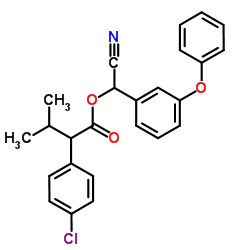| 结构式 | 名称/CAS号 | 全部文献 |
|---|---|---|
 |
氰戊菊酯
CAS:51630-58-1 |
|
 |
顺式氰戊菊酯
CAS:66230-04-4 |
|
 |
保棉磷
CAS:86-50-0 |